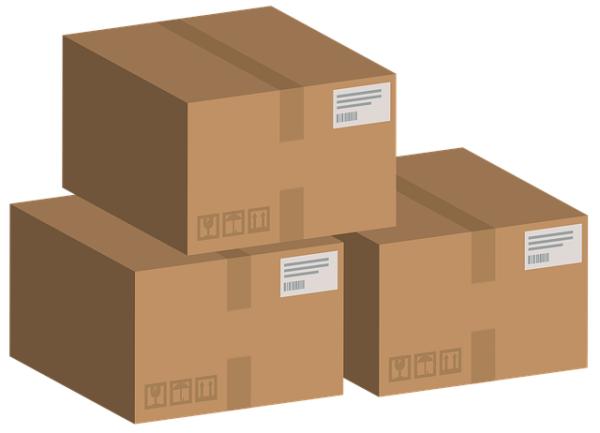You can become infected with COVID-19 through direct contact where you get your dose from viral particles that land on your face and hands from droplets generated by coughs and sneezes, by breathing in aerosols of the virus, and indirect contact where your hands pick up the virus from contaminated surfaces, like delivery boxes.
This indirect transmission is difficult. A respiratory virus, like COVID-19, must be shed onto the surface, to survive on the surface, and then be transmitted in large enough concentrations onto our hands to come in contact with our eyes, nose, or mouth. Several factors influence the survival of viral particles, but they primarily act by drying out the solution that contains the virus and the virus itself. We have known for many years that desiccation, the scientific term for dehydration, will reduce the ability of viruses to be effectively transmitted to a person by about 50%.
 The recent news report has suggested that COVID-19 has both “a very limited capacity to survive on dry surfaces,” or “the capacity to survive on dry surfaces for a sufficient duration to facilitate onward transmission.” The primary reason we see conflicting findings is in how the presence of the virus is determined. Most studies identify portions of the virus, which is a quick method but over counts what we genuinely want to know, the presence of viable virus particles, able to transmit themself to us. That information comes from viral cultures, which take longer to perform and generally show lower transmissibility.
The recent news report has suggested that COVID-19 has both “a very limited capacity to survive on dry surfaces,” or “the capacity to survive on dry surfaces for a sufficient duration to facilitate onward transmission.” The primary reason we see conflicting findings is in how the presence of the virus is determined. Most studies identify portions of the virus, which is a quick method but over counts what we genuinely want to know, the presence of viable virus particles, able to transmit themself to us. That information comes from viral cultures, which take longer to perform and generally show lower transmissibility.

In prior studies of SARS, COVID-19’s family member, hospitals in Bangkok, and Taipei showed SARS-CoV RNA contaminated 38 % of patient care areas; for a Canadian hospital, the contamination was far less, 3.5%. But, “Viral culture did not detect viable SARS-CoV from any of the surfaces in these studies.”
The data on the two more well-studied coronaviruses, SARS and MERS, shows that they remain viable longer than seasonal flu, perhaps because of their lipid encapsulation or covering. Their survival increases when their concentration is higher, and survival differs among various strains. That being said, “Intact viral RNA appears to remain detectable on surfaces for longer than viruses retain the ability to infect cells.”
Evaporation
The loss of the liquid surrounding infectious droplets, produced by coughing and sneezing, significantly reduces viral viability. A recent study looked at the details of evaporation, a process described with the laws of physics. Where the droplet lands can make a difference, surfaces that are more absorbent, like cardboard and paper, “wick away” that fluid drying out the virus more quickly than surfaces like the metal found in hospital bed rails – a common site of nosocomial, hospital-acquired, bacteria and viruses.
With any given surface, the time necessary for the droplet to evaporate was prolonged primarily by increasing humidity and decreased by increasing temperature. Air movement played a smaller role, as did the shape of the droplet, which defined the area exposed to these factors. It is the interplay of temperature and humidity that determine the rate of evaporation and provides an indirect measure of viral survival time.
These researchers presented the intriguing idea that part of the differences we see in global COVID-19 cases has to do with the local temperature and humidity. The graph shows the drying times in green and infections per day in red. And yes, infections are additionally influenced by population density, efforts at social distancing as well as track and trace, but the weather does seem to play a role. They suggested that while the 20 % higher humidity in Singapore than New York, promoted viral survival, the 40 F higher temperature, resulted in faster drying time and  lower infectivity. Indoor temperature and humidity were not measured and will undoubtedly play a role. Heating and cooling indoor spaces reduce humidity significantly, which leads to another interesting, but unproven idea. What role do the warming temperatures and changing humidity play in these infections? Is climate on the regional levels been influencing the infections being reported in the Southern and Western states?
lower infectivity. Indoor temperature and humidity were not measured and will undoubtedly play a role. Heating and cooling indoor spaces reduce humidity significantly, which leads to another interesting, but unproven idea. What role do the warming temperatures and changing humidity play in these infections? Is climate on the regional levels been influencing the infections being reported in the Southern and Western states?

Sources: Likelihood of survival of coronavirus in a respiratory droplet deposited on a solid surface Physics of fluids DOI: 10.1063/5.0012009
Transmission of SARS and MERS coronaviruses and influenza virus in healthcare settings: the possible role of dry surface contamination Journal of Hospital Infection DOI: 101.1016/j.jhin.2015.08.027
Loss of Infectivity on Drying Various Viruses Nature DOI:10.1038/1951063a0
Survival of human coronaviruses 229E and OC43 in suspension and after drying on surfaces: a possible source of hospital-acquired infections. Journal of Hospital Infection DOI: 10.1053/jhin.2000.0795




